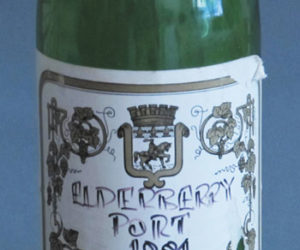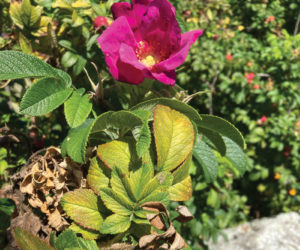I enjoy making many kinds of country wines, but one of my favorites is made from fresh juice pressed from the sugar cane as it is processed into sugar. It is used by many Caribbean and South American countries to create a plentitude of sticky-sweet drinks, some of which are fermented — as we will do here (sugar cane wine) — while others are distilled it into rum. As delicious a project as rum-making may sound, US law prohibits any sort of homespun distillation process, though it may help some of you to think of fermented sugar cane wine as a sort of pre-rum, if you like.
I suppose I was drawn to this wine because of my affinity for making country wines and I love the idea that so many things other than grapes make such excellent wine. Currently I have a mango wine, as well as wines made from spiced pumpkin, pineapple, peach blackberry, special fig, green apple, strawberry, straight blackberry, wildflower mead and a blackberry melomel bottled up and ready to go. I enjoy winemaking so much I’ve never really counted the years that I have been doing it, but I guess that I have been making wine for a while now . . . probably since I was 18 years old. I suppose that, being an “army brat” for 20 years, I had plenty of time to develop a hobby, and I turned to winemaking. Officially, I was born on Fort Gordon in Augusta, Georgia and lived there for a couple of years, but I consider myself as being from everywhere, in a sense. I think I picked up a taste early on for German wine and beer while I was in Wildflecken and Heidelberg, though there were many opportunities to absorb things up while moving around.
It all started one night when I was talking with some friends who were going to the Cairo (Georgia) Sugar Cane Festival. As we talked about the festival, our conversation stumbled upon what a cool idea it would be if we could make wine from sugar cane juice. We already knew that rum was made from the sugar cane, but what about wine? That question really got my juices flowing, so to speak, and I decided to do some research. But, after my books yielded no good information, and the Internet only pointed to the Puerto Rican rum industry, I began to lose a little hope. Then, after much searching, I found a website that linked me to the illusive origins of sugar cane wine. When I had learned a little more about what I was looking for, I started asking some of friends from South America about it. Everything else was pretty easy from there, since Florida has a plentiful supply of sugar cane (and juice).
I could best describe this potable as a watered-down version of rum, but that would be an injustice to its delicate and intriguing flavor profile. Next year, during sugar cane season, I plan to try my hand with metheglin and use my Vesou as a base instead of honey and water. Whatever you try with your sugar cane wine, I wish you the best of luck in your adventures. And may this recipe for a pre-rum made and enjoyed by thousands for over 300 years be as good to you as it has been to me.
Recipe:
Sugar Cane Juice Wine
(1 gallon/3.8L)
Ingredients
1 gallon (3.8 L) fresh sugar cane juice
1 crushed Campden tablet
1⁄4 tsp. acid blend
1⁄4 tsp. tannin
1 tsp. yeast nutrient
1 gram of Red Star Champagne yeast
granulated sugar* (you must determine the original gravity of your cane juice with a hydrometer. Mine was 1.060 OG, equaling 8% potential alcohol by volume according to my hydrometer conversion chart), so I decided to add 2 lbs. (0.9 kg) of sugar to bring the gravity up to 1.090 O.G. or 12% potential alcohol.)
Step by Step
1. Clean and sanitize all winemaking equipment and work surfaces.
2. Activate your yeast 24 hours before pitching to become fully active.
3. Mix the sugar (from your prior O.G. calculations) and the sugar cane juice in a 2-gallon (7.6-L) bucket, stir until well mixed and dissolved, then add the crushed Campden tablet, acid blend and tannin into the must. Mix well. Seal with the lid, add the fermentation lock, and place in 70 °F (21 °C) space for 24 hours.
4. Twenty-four hours later, add the yeast nutrients and yeast. Mix well. Top the fermenter with a lid and a fermentation lock.
5. Let the wine sit and ferment. Stir daily or shake the bucket to speed fermentation. When fermentation has ended wait a few days before racking into a carboy. You may re-rack every 30 days as desired, checking for the final gravity you want. Stop fermentation when your Vesou is dry, medium sweet or sweet wine; it is your choice.





